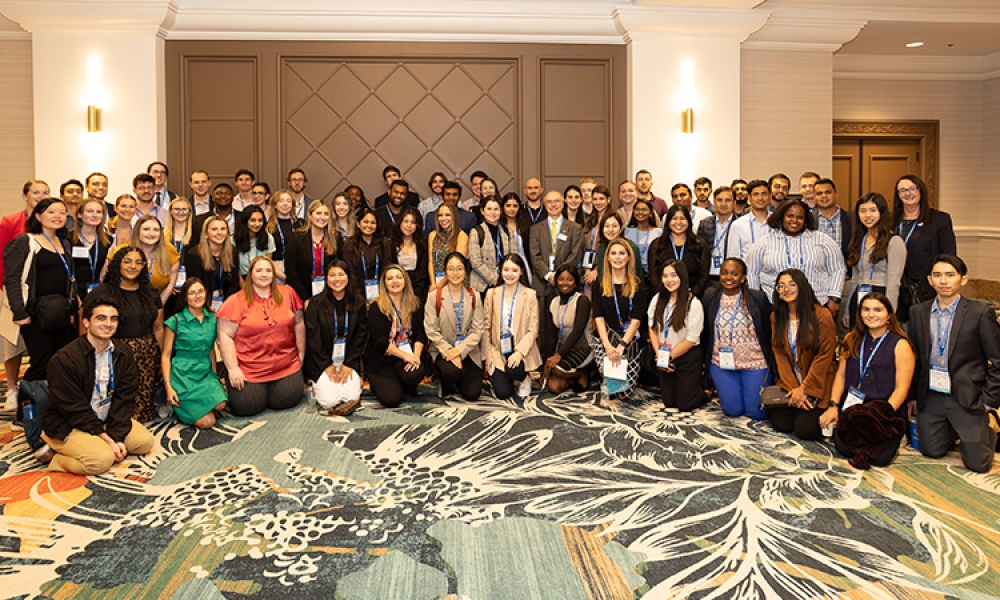2017 Quality Manufacturing Conference - Day 3 Recap


US-EU Mutual Recognition Agreement1
Signed and Sealed Immediate Past ISPE Chair Joe Famulare, Vice President, Global Compliance, Genentech (A Member of the Roche Group) welcomed the room to the FDA Keynote Session on the last day of the 2017 ISPE/FDA/PQRI Quality Manufacturing Conference. He introduced the first keynote speaker, Helen Y. Saccone, CDR, PharmD, Associate Director, Global Regulatory Policy, FDA/OC/OGROP. Saccone opened by joking that the US-EU Mutual Recognition Agreement (MRA) had been “a long time in the works,” and “I’m simply finishing the work that Joe (Famulare) started (when he was an FDA colleague).” Under the terms of this agreement, regulators in the United States and Europe will be able to share and use each other’s good manufacturing practice (GMP) inspections of pharmaceutical manufacturing facilities. Before entering into details of the MRA, Saccone provided an overview of FDA inspections throughout the world, remarking, “globalization has had an impact on the location of our facilities and how we conduct our business.” From 2011 to 2016 more than 40% of all FDA inspections were in Europe, and in the past two years, registered drug facilities have grown 66% in both China and India. 2016 Statistics:
- FDA inspected 32% of the 1224 drug facilities in Europe; 5% of those inspections resulted in an Official Action Indicated (OAI) finding.
- FDA inspected approximately 21% of the 754 drug facilities in China, and about 22% of those inspections resulted in an OAI finding.
- FDA inspected approximately 23% of the 722 drug facilities in India, and about 14% of those inspections resulted in an OAI finding.
Saccone explained the MRA provides “greater efficiency, reduces duplication of effort, and reallocates resources to areas of highest risk.” “While the MRA was signed in March 2017, its origins date back to 1998,” she explained. First signed in 1998, yet never fully implemented, the agreement initially only provided for a rapid alert notification process. FDA teams observed European country internal audits and developed an objective capability assessment for new countries that entered the agreement. The FDA previously had worked with Europe but wasn’t familiar with their legal process for GMP oversight, or how inspectors would be trained, for example. Europe was concerned about program alignment and new initiatives such as quality metrics.
The 2012 Food and Drug Administration Safety and Innovation Act (FDASIA), made it possible for the FDA to enter into agreements to recognize drug inspections conducted by foreign regulatory authorities. “The FDA could not share unredacted reports at that time, however, although its European counterparts could, and did,” she said. This is what led to a lateral agreement in 2014 for sharing unredacted inspection reports, including secret trade information. The FDA was invited to observe the EU’s Joint Audit Program, in which auditors from two different EU countries audit the regulatory agency of a third country. “The Joint Audit Program ensures consistency of GMP standards, and a harmonized approach throughout Europe, using the PIC/S evaluations guide,” explained Saccone. “After eight observations, the FDA realized the process was robust, and that auditors were well trained and qualified.” Since September 2014, the United States has observed 25 audits. Only two remain for 2017, after which the FDA will have audited all European Union member states. “The new agreement, or rather the annex to the original 1998 agreement,” said Saccone, “allows us to make practical decisions based on facts.” She then spoke about the details of the new agreement: Its scope embraces a vast majority of drugs; allows for the reevaluation of products such as vaccines; and surveillance, and under certain conditions, pre-approval inspections of marketed human drug facilities in the United States and Europe.
Saccone said the FDA was on track to completing assessments and recognizing inspections by the November deadline. She concluded by summarizing the MRA’s intent saying, “This cements our (FDA and EU) collaboration by taking concrete steps to rely on each other to benefit the American public. It also allows us to avoid duplication of drug inspections and devote resources to other parts of the world. “If we had had this new agreement earlier, FDA resources used in the EU could have been diverted to cover more than half the facilities in China and India.”
You Can’t Outsource Quality1
Joseph Famulare then introduced the morning’s second keynote speaker, Thomas Cosgrove, Director, Office of Manufacturing Quality (OMQ), CDER, FDA. Cosgrove, who opened with his “big-picture thoughts” on his topic, “Outsourcing Quality: Perspectives on Risk in the Global Drug Supply Chain.” “Each person in this room has a significant role in protecting patients against risk and a significant role in ensuring the quality of drugs your companies manufacture. You know how hard your job is technically. You know the expertise you need every day. You know how to deal with FDA inspectors; when there’s a 483, you know how to handle it. Because you come to ISPE, you’re plugged in. “In a world with complex international supply chains, though, the viability of your commercial enterprise depends on everyone in the supply chain doing as good a job as you do—every contract manufacturer, every CMO, right down the line. If they’re not doing as good a job as you are, there’s a high likelihood that your drug supply could be interrupted. This should really scare you. This should show you how important it is to be familiar with every step in your supply chain, both domestically and internationally.” “You know more about your drugs than I do. It’s not FDA’s responsibility (or ability) to ensure that companies deliver consistently high-quality drugs. That’s up to you. “But FDA officers know a lot about the risks in the international supply chain. They stumble on significant risks in every step of GMP.
Sponsors and owners aren’t always aware of these problems, which can wreak havoc in the international supply chain and cause problems with applications getting approved. “Why is this happening? FDASIA.* Since it was introduced there are more foreign inspections. If you take anything away from today’s talk, take this: The risk is there, the risk is present. It’s up to you to make sure your counterparts are doing as good a job as you are.” As he moved into the details of his presentation, he noted that while the title of his presentation was “outsourcing quality,” he explained that the phrase wasn’t meant to suggest that companies could outsource their quality units or even fully outsource “quality” per se. They must, however, undertake outsourcing in a way that ensures quality throughout the supply chain. Displaying an organizational chart that showed the OMQ’s place in the structure of the Office of Compliance, Cosgrove explained that OMQ is responsible for current good manufacturing practice (cGMP) enforcement and compliance to block adulterated drugs from the US market. The FDA issued 54 warning letters in 2016, as well as import alerts, regulatory meetings, and other enforcement actions. “Why should you be worried about this?” Cosgrove asked the audience. “There are a lot of inspectors out there.
There’s a good chance your contracting partner will be inspected.” The most important quality questions for the agency are: Is a drug adulterated? Is patient safety at risk? To answer these questions, regulators determine if there are contamination, sterility, potency, or data integrity issues. The higher the risk, the more quickly regulators take action. “It used to be that drug agreements were commercial agreements. Quality wasn’t a factor,” said Cosgrove. Now quality agreements are common and sophisticated; they can define expectations and responsibilities in a contract manufacturing arrangement. “But do companies have sufficient understanding of the risk involved?” he asked. “One contract manufacturer,” he said, “was also manufacturing car cleaning compounds and industrial chemicals, as well as drugs. Could you qualify a cleaning process that would allow that?” He answered his own question: “No.” “You can’t outsource quality,” Cosgrove reminded his audience. Outsourcing arrangements can delegate some GMP responsibilities, but the owner has ultimate accountability for product quality. “It’s not just looking at a few pieces of paper,” he continued. “It’s taking the time to make sure GMP process has been followed throughout the life cycle.” Out-of-specification results and quality defects often indicate a lack of communication between the parties. These are very important issues that should be included in the quality agreement. “Where is your weakest link?” he asked. “Work hard to find that link, and address it.
No matter how sophisticated your operation, the quality of your drugs is limited by your supply chain.” So how do you assess the integrity of your supply chain? “Insist on broad, deep oversight,” said Cosgrove. “Look for large systemic issues, don’t focus on just one area. The CMO becomes an extension of your company. If you don’t think of it that way, there’s going to be a problem down the line.” Recent warning letters with data integrity citations, for example, ask firms to respond with three key items: a comprehensive evaluation, a risk assessment, and a remediation strategy (including a corrective action plan). “Your partner has to do all this and do it right before you can go back to business,” Cosgrove said. Contract manufacturers in other parts of the world, however, are new to the world of the FDA. “Your supply chain depends on their response,” he continued. “Deal with this in your quality agreement so you can be at the table to help craft the response.” “Even in a complex market,” Cosgrove concluded, “everyone is responsible for quality. Owners and all supply chain partners (contract facilities, suppliers, etc.) should work together proactively to characterize and control risks to product quality.
1 DISCLAIMER: The views and opinions expressed in this presentation are those of the authors and do not necessarily represent official policy or position of the Food and Drug Administration *FDASIA: Food and Drug Administration Safety and Innovation Act of 2012, designed, among other things, to enhance the safety of the drug supply chain.


